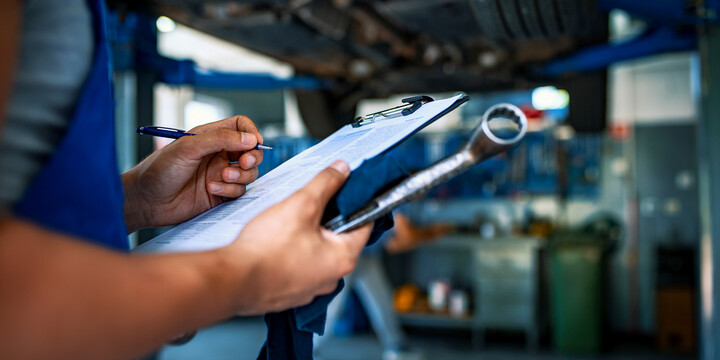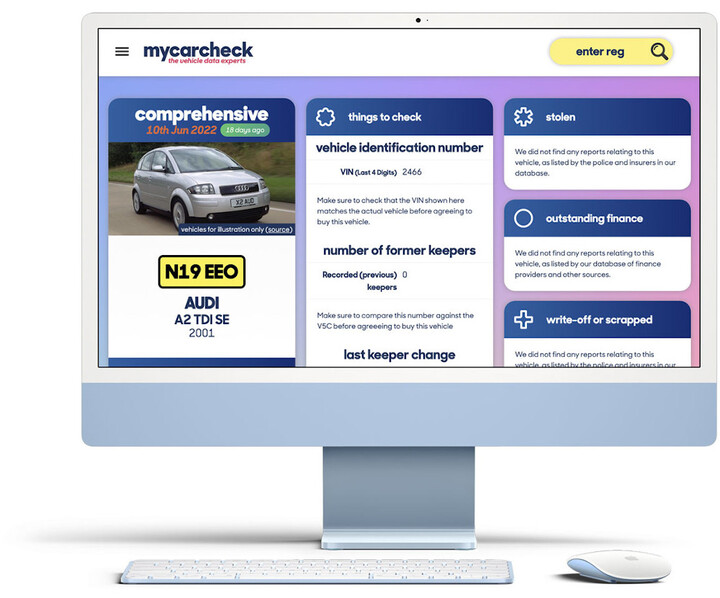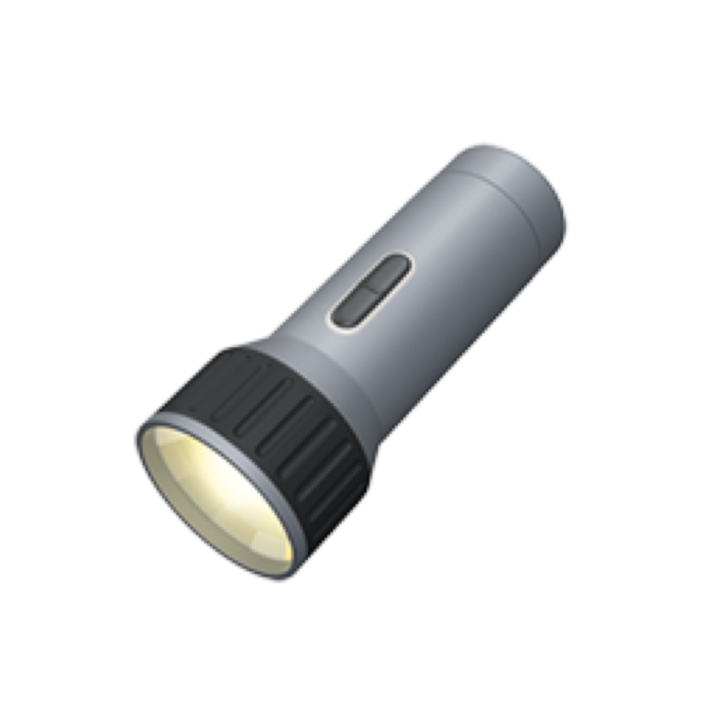
how to carry out a vehicle inspection
FREE Car History Check
See MOT history, valuations, detailed specs and more… AND upgrade to see if any vehicle has been stolen, has finance or has been written off from just £4.99
It is important to carry out a vehicle inspection, which is a physical check of a used car, to make sure the vehicle you are buying as no problems. Vehicle checks tell us a great deal about a car but parts may deteriorate - or have failed - since the last service or MOT test. And just how careful have the previous owners been with aspects like interior trim and bodywork?
Some companies offer vehicle checking services but there are many items you can inspect yourself. It isn’t just about safety either: buying a car with faults or which hasn’t been maintained properly is likely to cost you money. And if something isn’t quite right, it can be a handy bargaining point.
Even if you aren’t in the market for a used car, many of these checks - such as tyre condition and vehicle fluids - should be done on your car regularly for the safety of you, your passengers and other road users. So read our sections on vehicle inspection and remember that a car’s roadworthiness is your responsibility. If you don’t feel confident or need a second opinion, do seek expert advice. It could save you money…or your life.
Why you should check the Car’s seatbelts and Airbags
Two key safety features in any modern car are seat belts and airbags and these shouldn’t be overlooked when evaluating a used car.
Seatbelts
It is the most natural movement after sitting in a car: to reach for the seatbelt. It is a legal requirement to wear a seatbelt – even for rear passengers – and they have saved countless lives since their introduction. Of course, they are only useful if working properly and there are some easy checks you can do.
First look at the condition of the belts. Are they frayed? Are they damaged where they have been trapped in the door or by a rear folding seat? Then check their operation. Do they pull out smoothly? Do they clip securely into their buckles? And if pulled swiftly – simulating a heavy braking or impact situation – do they lock?
Seatbelts haven’t escaped the advances of technology and there are often additional mechanisms to ensure occupants are properly restrained in the event of a crash. Pre-tensioners operate to pull the belt tight prior to impact. Some cars even tighten the seatbelt briefly once passengers have buckled up so they know each person’s size and will take up the correct amount of slack if triggered in a crash. System warning lights should indicate if there is a problem with any of these mechanisms.
Airbags
Most cars built in the last 20 years are fitted with at least one airbag. Many new cars have multiple airbags and airbag curtains. These use a chemical reaction to explode and inflate large bags which sit between you and the vehicle in the event of an impact. For pedestrian impacts, some vehicles also partly raise their bonnets to soften the blow for anyone unfortunate enough to hit the front of a vehicle. They don’t need any maintenance – unless there are specific instructions in a car’s manual to have them checked at a certain age - but it is important to look for any warning lights or messages indicating a fault. Because of their explosive nature, we advise any airbag repair work be carried out only by qualified personnel.
Why you should check the car’s interior condition
A car’s interior will reveal much about the life it has led. Perhaps it has just been used by one particularly careful individual; maybe it has ferried a hoard of children and a moulting dog.
Most cars will respond well to a good valet but look carefully and there will still be tell-tale signs. Scratches on the rear bumper and threshold plate could be from an animal’s claws as it jumps in and out of the boot. Scuffs and marks on the upholstery could indicate less than considerate children or that the car has been used to carry rough or bulky items to the tip.
Check for cigarette smells (and burn marks, particularly near the lighter); cars which have been smoked-in are deemed less desirable than those which haven’t.
These aspects may not bother you if you know a used car will have a similarly hard life under your ownership but remember the better kept it is, the easier it will be for you to sell and the best chance it has of maintaining its value.
Aside from the cosmetic considerations, there are a couple of areas where a careful inspection can reveal important information. If a car shows a low mileage, check for heavy wear on the driver’s seat. Look too at the steering wheel and pedal rubbers. If their levels of wear appear inconsistent with the car’s mileage it could be a sign the vehicle has been clocked – the mileage adjusted down to make the vehicle more appealing. Read our section on clocking and remember to use a vehicle checking service such as My Car Check to help validate the car’s background.
Why you should check the Car lights
All lights should be fully functioning on any car which is being sold as roadworthy. It is worth checking these because some - such as fog lights - can be more difficult to change and therefore it is sensible to have the seller sort any failed bulbs before you take delivery.
Bulbs Check front side lights, day running lights (if fitted) and headlamps (both low and high beam). Headlamps should be properly aligned which isn’t easy to check in daylight but you should be able to get a reasonable idea by pointing them at a wall in shade and checking the patterns are consistent and level.
Indicators should all be orange - some use orange paint on the bulbs which can fade over time - and remember to test the hazard warning switch. Also, check the indicator repeaters mounted on the front wings or integrated into the car’s door mirrors.
Check the taillights and remember to look at the lights which illuminate the rear number plate too. These should all come on when the sidelights or headlamps are switched on.
And of course, check your brake lamps. If you don’t have someone to press the brake pedal for you, try reversing up near something slightly shiny like a garage door and use your rearview mirror to look for their reflections. Remember to check the third high-level brake light too.
All cars built since 1986 have to have at least one rear fog lamp. Most rear fog lights are integrated into the rear light clusters. Some cars have a single fog lamp on one side and a reversing lamp in the corresponding space on the other. It is not a legal requirement to have front fog lamps but if they are fitted, they must work.
Lastly, don’t forget your reversing lights. These can usually be checked with the ignition on but engine NOT running. Or use the technique of backing up to a garage door to see them reflected. Some cars only have one reversing lamp wired-up.
Lenses Lamp lenses should be in good condition and this means not cracked or broken. Older cars can end up with dirt inside which reduces the lights’ effectiveness. Also, look for trapped water or condensation in the lights. This will reduce effectiveness, indicates a leaking lamp seal and is likely to lead to corrosion of the electrical contacts.
Some cars are fitted with perspex headlamp lenses and these have a tendency to go slightly cloudy with age. If particularly bad they can even fail an MOT test. There are aftermarket products to polish them which can work well. Otherwise, they will need replacing.
Why you should check the Car Windows and Wiper Blades
Whether seeking a used car or maintaining your existing one, it is important that you can see and be seen when at the wheel. The law states that 'all glass or other transparent material fitted to a motor vehicle shall be maintained in such condition that it does not obscure the vision of the driver while the vehicle is being driven on a road’. This means that anything from stickers which encroach on the driver’s view to faulty wipers - and even an empty washer bottle - could make a car illegal to drive. And it means you need to keep your windows clean, inside and out.
The operation of the wipers should be smooth and effective. If they judder, it may be due to old wiper blades with hardened rubber, the angle of the blade or contamination on the windscreen itself. Grease picked up from the road can also cause smearing which is one of the reasons it is important to have the right mix of washer fluid to keep the screen clean. The correct dilution will also prevent the fluid freezing in winter and help to shift debris such as dead insects in summer.
Do check the windscreen for cracks, especially at the edges or corners where they are less obvious. These can be due to an object such as a stone hitting the screen or even temperature changes. Small chips - even away from the area of the screen you look through - can be problematic. They can cause further damage to the screen and wiper blades by harbouring a small amount of gritty water which is then repeatedly swiped across the screen by the wiper leading to permanent damage. Larger chips in the glass can also lead to cracks. There are windscreen repair services and even some successful DIY kits for smaller chips.
Side windows can also become damaged if particles of grit become lodged in the window seal, scratching the glass each time the window is raised or lowered.
The other aspect which has legal implications is window tinting. New cars with tinted windows - often termed privacy glass for almost completely blacked-out windows - are built to conform with legislation. But if you are looking to buy a car with aftermarket tints - or are considering doing this to a car yourself - you will need to ensure it is within the law. In the UK, for cars first used on or after 1st April 1985, the windscreen must allow at least 75% light through. The front side windows must let at least 70% through.
Car Keys and Locks Inspection
The idea that a key is inserted into a lock to gain entry into a vehicle is somewhat dated now. In fact, many of the keys are small computers. Some have LCD displays showing information such as the car’s range on its current fuel level and even allow the car to be manoeuvred using the key alone.
This means keys and car security systems are both complex and potentially costly should they fail. And so, like all other aspects of a car, it is important to check everything works before committing to a purchase.
First, confirm the right number of keys are present: there should be at least two. If there is just one, where is the other and why is it missing? Check all buttons on each key work. And this includes some of the clever functions on some cars like holding the lock button to close all electric windows (and sunroof if fitted).
Some cars allow the choice of just unlocking the driver’s door or all the doors (usually via a menu option). So check all the doors unlock and lock properly on the press of the key. And sit inside and check the main internal lock/unlock button. This is often on the door but sometimes on the facia. On some cars, it requires a push of the interior handle or a lever next to it.
If the car has keyless entry, check it works as it should. With the key in your pocket or bag, you should be able to touch the pad or button on the external driver’s door handle and the car will unlock. If the car has a stop/start ignition rather than key-operated, check this works with both keys too.
And don’t forget to confirm how the fuel filler cap is unlocked. If it needs a key, is the right one available with the car?
Expert articles on Vehicle Inspection














